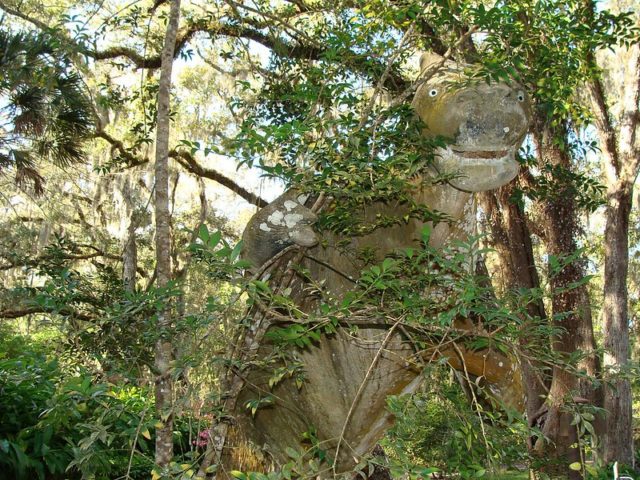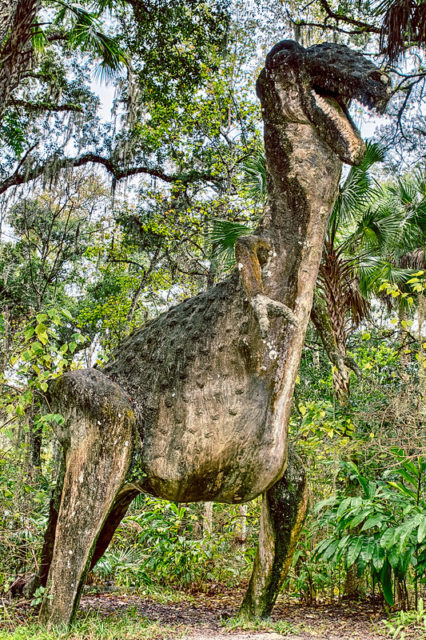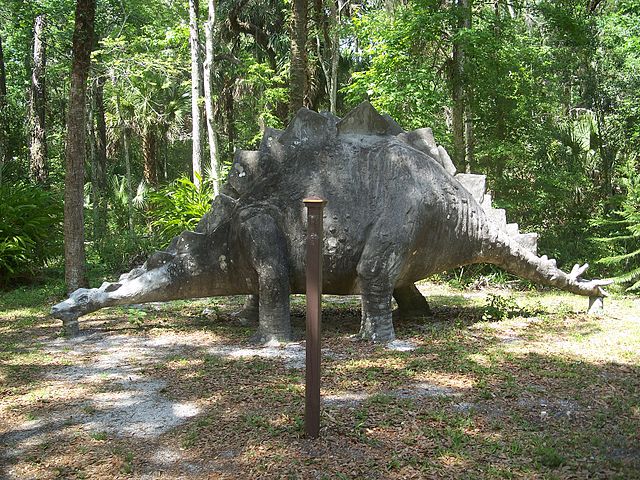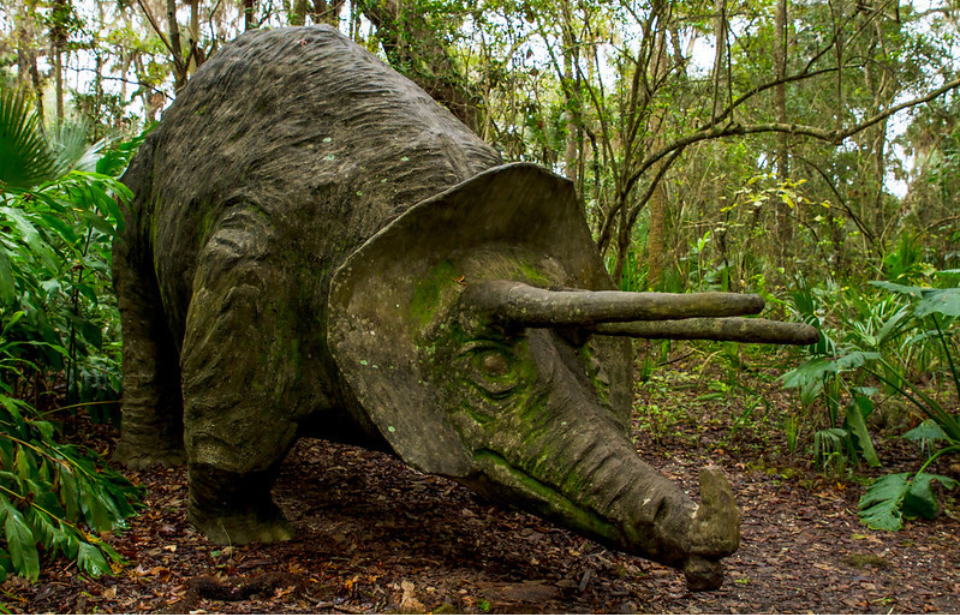Everyone has their own interests and hobbies, and some of them are more peculiar than others. For example, a dermatologist in Florida loved dinosaurs so much that he not only wrote a book about them, he also opened a theme park dedicated to the prehistoric reptiles. Named Bongoland, the attraction was short-lived. It seems the general public didn’t appreciate the creatures as much as he did.
Establishment as a plantation

In 1804, Bahamian immigrant Patrick Dean purchased a 995-acre plot of land in what is now Port Orange, Florida. He grew rice, cotton and sugarcane on the property until his gruesome death in 1818, during the First Seminole War. The plantation was then divided up into smaller portions, leading to the establishment of the Dunlawton Sugar Mill in 1832.
The property was purchased by Sarah Anderson and her two sons, James and George. She named it Dunlawton after her maiden name, “Dunn,” and that of the broker who sold her the land, “Lawton.” Using slave labor, the mill operated until the fall of 1835, when the Second Seminole War broke out.
During the conflict, the mill, which was the site of heavy fighting during the Battle of Dunlawton Plantation in 1836, was pillaged. After Florida became a state in 1845, settlers began to move to the area. One of these settlers was John Marshall, a planter from Louisiana. He purchased the property but failed to make the plantation a success, due to the high costs associated with running it and the onset of the American Civil War.
During the Civil War, the plantation fell into disrepair, with its only use being the production of salt. In the years following the conflict, it passed through a number of hands, some of whom attempted (and failed) to turn the property into a tourist attraction.
A dinosaur-obsessed dermatologist opens Bongoland

In the 1940s, a portion of the property was leased to dermatologist Perry Sperber, who wished to turn it into a dinosaur-themed amusement park. Sperber had a particular interest in dinosaurs, which led him to publish a book titled Sex and the Dinosaur. The book detailed how modern animals are related to those that existed in prehistoric times.
Sperber enlisted the help of M.D. “Manny” Lawrence, a local cement worker, who created life-sized dinosaur statues out of concrete and chicken wire. The park, named Bongoland, also featured the ruins of the Dunlawton Sugar Mill, a recreation of a Seminole village, a miniature train and live animals, including a baboon named Bongo.
Unfortunately for Sperber, the public wasn’t interested in visiting Bongoland. The attraction closed in 1952, only a few years after it opened. It then sat neglected for over a decade, at which point the property was sold to Volusia County.
Bongoland’s dinosaurs still remain, although they’re quite weathered

Despite having been constructed over 50 years ago, the dinosaur statues that prominently featured in Bongoland remain standing. However, their paint has long since worn off, and they’re covered in mold, dirt, spiderwebs and moss. Those who visit the area can still see the 30-foot Stegosaurus and the 25-foot Triceratops. Sadly, the 42-foot T-rex no longer remains standing, having collapsed during a rainstorm in 2019.
Along with the dinosaur statues, there’s also a smaller Dimetrodon placed beneath a Bird of Paradise, as well as a giant ground sloth that was built in 1990.
More from us: The MS World Discoverer Was Taken Out by an Uncharted Coral Reef
Those wishing to visit the remnants of Bongoland can do so by taking a trip to the Dunlawton Sugar Mill Gardens, which has since taken over the property. Along with the statues, it’s filled with a number of plant collections, which are sure to excite even the most amateur of gardeners. Admission and parking are free, and the garden is open daily from 8:00 AM to 5:00 PM.
